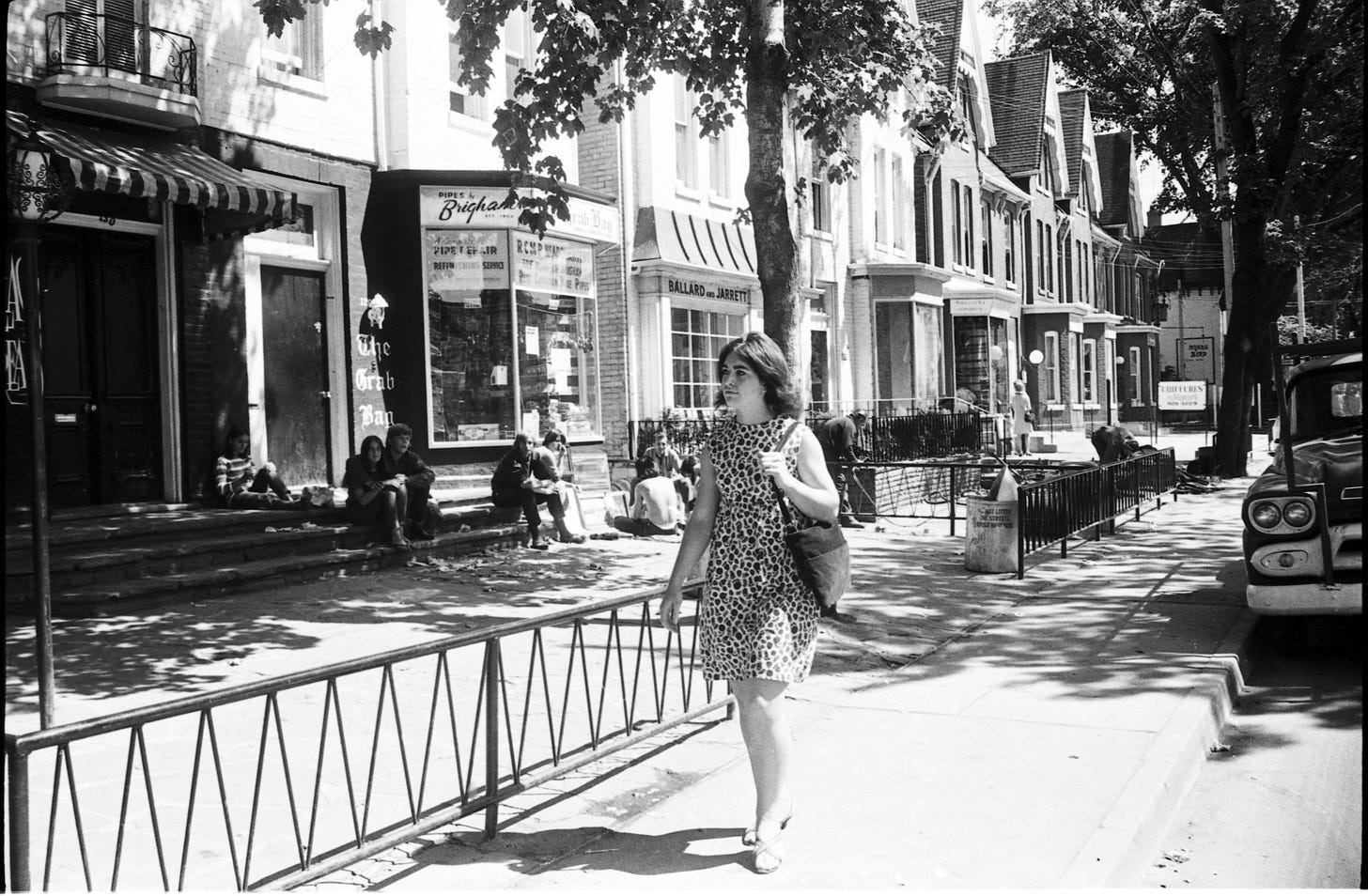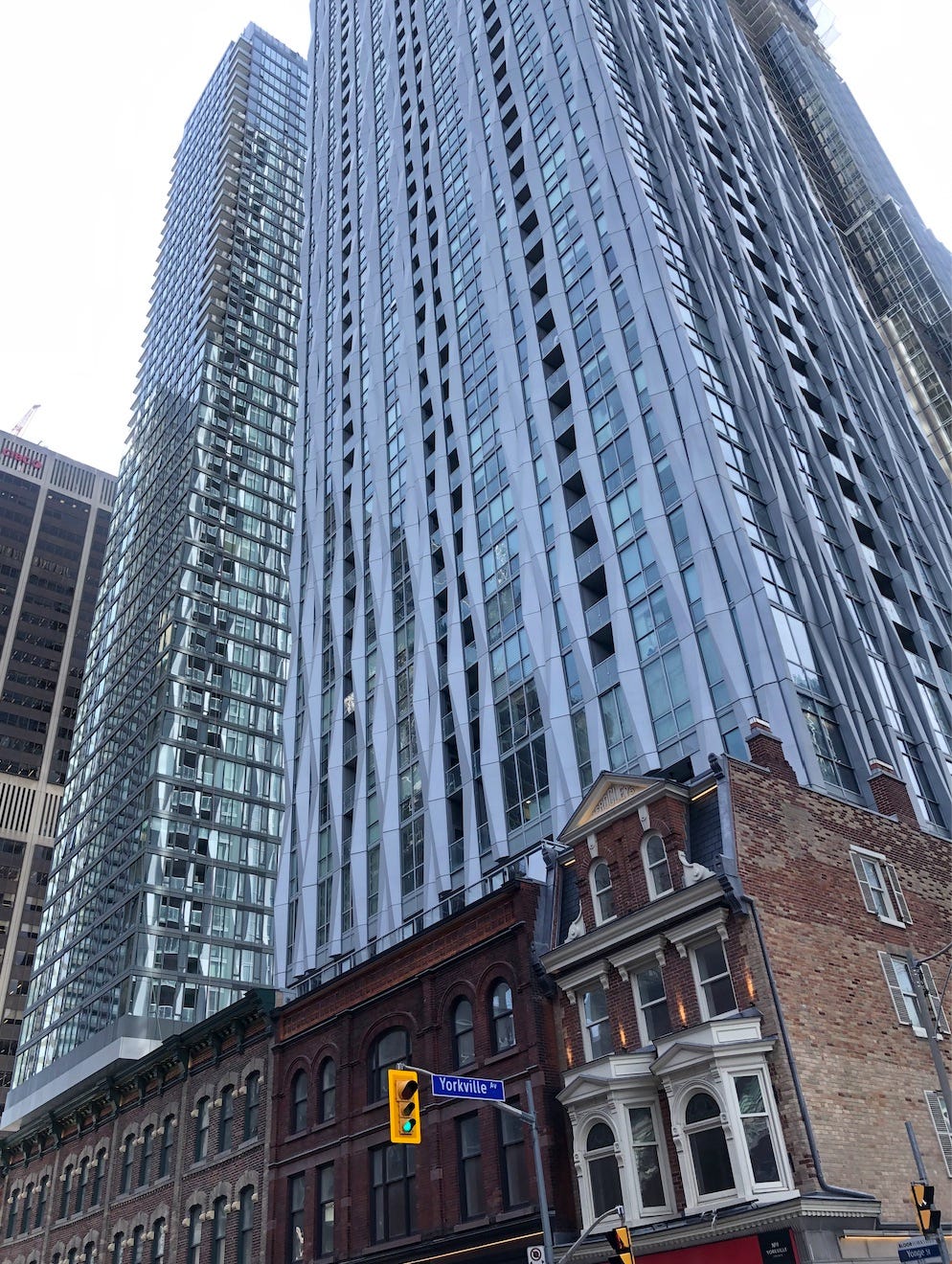
What is it about Toronto’s seemingly bottomless appetite for façadism? Reluctant to completely obliterate many of the city’s handsome pre-war and 19th century buildings — or at least to say ‘no’ to the frequent cries for conservation — the planning department has repeatedly opted for retaining the facades of original buildings. But instead of preserving the past while embracing the new, most of these compromises are sad testimonies to what has been irretrievably lost — and the city’s lack of courage. We are talking two stories of original brick frontages tacked onto 30, 50, 80-storey glass behemoths that could be absolutely anywhere in the world. Gone are the unique, graceful, often modest yet characterful period buildings that once distinguished Toronto from its generally grander American cousins. Except for these forlorn facades, which mostly just look ridiculous.
Such is compromise.
This example, on Yonge north of Bloor, is particularly painful, although it tries harder than most to retain something of the old city. These handsome facades — with some actual, if modest rooms inside — tell much about what has been lost.
Nicely cleaned up, they speak volumes about what might have been, had Toronto chosen to save even a few historic streets, such as Yorkville and the Yonge and Bloor area: for example, such a district might have included the two short streets running parallel to Bloor on the north, from Yonge to Avenue Road, as well as the streetscape on Yonge itself, south to Wellesley and north to Davenport, or at least blending into the southern skirts of the grand residences of Rosedale. It’s not a lot of real estate. But for private developers, such locations mean enormous profit. And profit, it seems, is too often the guiding principle. As any developer’s lawyer will tell you, “Every storey is more profit.”
Instead, the once charming Yorkville, where the likes of Joni Mitchell and Gordon Lightfoot got their starts, is now little more than a few butchered streets, with a little bit (a very little bit) of the old village struggling to assert itself among a forest of ungainly, overbuilt ‘upgrades’, destroying the very thing that originally made this area a poplar shopping and entertainment destination. In this example, the two new towers at the end of the street completely overwhelm the historic facades. They are not terrible, they are just in a very bad place. Placement, harmony and intelligent conservation are everything in cities. This development violates all three: better the old storefronts had been completely replaced, than this sad mashup.
With more resolve, the plague of uninspired towers erupting in Toronto — which generally cater to the affluent, including many non-resident buyers who often do not live in their properties, and which provide little housing for less affluent groups — could have been located nearby, even a few blocks away, in many cases. Such preservation could have been done on a case by case basis, with certain exceptions, such as the financial district, which is one of Toronto’s architectural success stories. Mostly.
More on that next time.





